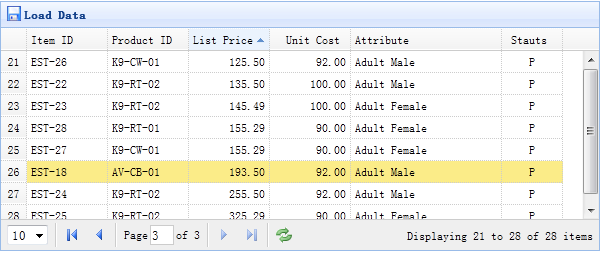js如何方便地获取URL中各个组成部分
统一资源定位符(URL),是对 Web 资源(网页、图像、文件)的引用。URL 是指定资源位置和检索资源的一种协议(如http、ftp、mailto)。
如下代码,这是今日头条发布文章的URL地址:
https://mp.toutiao.com/profile_v4/graphic/publish
有时需要从URL中获取特定的信息,比如域名、页面地址、查询参数等,这里介绍如何使用URL对象来解析。
URL结构
如下图,详细介绍组成URL的各个部分:
图1
- protocol —— 网络协议,如http、https、mailto、ftp等。
- username—— 用户名,如ftp访问时需要用户名。
- password——密码,如ftp访问时需要密码。
- hostname——主机名称。
- port——端口号。
- host——主机地址,包括hostname,和port。
- pathname——路径名称。
- search——查询字符串,问号“?”开头。
- path——完整路径,包括路径名称和查询参数。
- hash——哈希值,#号开头。
URL()构造函数
创建一个URL解析实例,如下:
const url = new URL(relativeOrAbsolute [, absoluteBase]);
通过上面url实例对象就可以解析一个路径地址。
relativeOrAbsolute参数可以是绝对或相对 URL。如果第一个参数是相对的,那么第二个参数absoluteBase必须要有,并且必须是一个绝对 URL,作为第一个参数的基础路径。
例如,使用绝对 URL 进行初始化
const url = new URL('http://example.com/path/index.html');
console.log(url.href); // => 'http://example.com/path/index.html'
或者,使用相对路径初始化
const url = new URL('/path/index.html', 'http://example.com');
console.log(url.href); // => 'http://example.com/path/index.html'
你可以在控制台打印url实例,看到如下接口:
interface URL {
href: USVString;
protocol: USVString;
username: USVString;
password: USVString;
host: USVString;
hostname: USVString;
port: USVString;
pathname: USVString;
search: USVString;
hash: USVString;
readonly origin: USVString;
readonly searchParams: URLSearchParams;
toJSON(): USVString;
}
在JAVAScript 中 USVString 返回url中对应部分的字符串值。
获取路径上查询字符串
使用 url.search 属性访问以 ? 为前缀的查询字符串,如下:
const url = new URL(
'http://example.com/path/index.html?message=hello&who=world'
);
console.log(url.search); // => '?message=hello&who=world'
如果没有查询字符串,则url.search 返回空字符串''。
解析查询字符串
使用url.searchParams属性解析查询字符串,通过get方法获取对应参数值,或者has方法判断是否存在某一个参数。
让我们看一个例子:
const url = new URL(
'http://example.com/path/index.html?message=hello&who=world'
);
url.searchParams.get('message'); // => 'hello'
url.searchParams.get('missing'); // => null
url.searchParams.has('who'); // => true
url.searchParams.has('missing'); // => false
关于URLSearchParams更多方法,可以参考
https://developer.mozilla.org/en-US/docs/Web/API/URLSearchParams
获取主机名
使用 url.hostname 属性获取 URL 的主机名,如下:
const url = new URL('http://example.com/path/index.html');
url.hostname; // => 'example.com'
路径名
url.pathname 属性获取 URL 的路径名:
const url = new URL('http://example.com/path/index.html?param=value');
url.pathname; // => '/path/index.html'
如果 URL 没有路径,则该url.pathname属性返回一个斜杠字符/:
const url = new URL('http://example.com/');
url.pathname; // => '/'
哈希值
最后,可以使用 url.hash 属性获取哈希值:
const url = new URL('http://example.com/path/index.html#bottom');
url.hash; // => '#bottom'
当 URL 中的哈希值丢失时,url.hash计算结果为空字符串'':
const url = new URL('http://example.com/path/index.html');
url.hash; // => ''
网址验证
当new URL()构造函数创建实例时,它还会验证 URL 的正确性。如果 URL 值无效,则抛出 TypeError。
例如,http ://example.com 是一个无效的 URL,因为 http 后面有空格字符。
让我们使用这个无效的 URL 来初始化解析器:
try {
const url = new URL('http ://example.com');
} catch (error) {
error; // => TypeError, "Failed to construct URL: Invalid URL"
}
URL 修改
除了使用 search、hostname、pathname等属性获取值,您还可以通过这些属性重新赋值修改URL。
例如,让我们将现有的 URL 的主机名从 red.com 修改为 blue.io:
const url = new URL('http://red.com/path/index.html');
url.href; // => 'http://red.com/path/index.html'
url.hostname = 'blue.io';
url.href; // => 'http://blue.io/path/index.html'
注意,url实例中只有origin和searchParams属性是只读的,其他都是可写的,并在您更改它们时修改 URL。
总结
JavaScript 中的 URL()对象可以方便地解析和验证URL。
new URL(relativeOrAbsolute [, absoluteBase])接受绝对或相对 URL 作为第一个参数。当第一个参数是相对的时,您必须将提供第二个参数做为第一个参数的基础URL。
创建URL()实例后,您可以轻松访问最常见的 URL 属性值,例如:
- url.search 获取原始查询字符串
- url.searchParamsURLSearchParams 解析查询字符串中的参数
- url.hostname 访问主机名
- url.pathname 读取路径名
- url.hash 获取哈希值
关于浏览器支持,在现代浏览器中都支持URL对象。但是,它在 Inte.NET Explorer 中不可用。




























